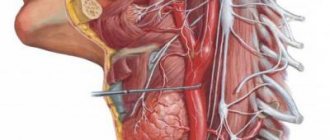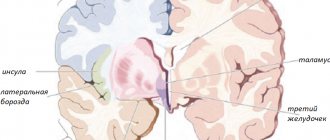Before scientists conducted relevant research, people perceived sleep as a “switch off.” As a result of research, it turned out that during the sleep phase, the human brain actively works, in different ways at different stages. Sleep is heterogeneous and consists of several phases. Sleep is studied both by psychology and by the specialized science of somnology.
It has been established that it is possible to maintain the body in at least some acceptable condition without sleep for 24-36 hours. Fatigue, of course, will occur, but performance will still be maintained. Anyone should know what sleep phases exist. Also, for proper planning, you should know how the phases of a person’s sleep occur over time.
Which phase is more important?
There is no answer to this question, just like the classic one: “What came first: the chicken or the egg?” Both slow and fast sleep are necessary for our body, this is physiology. During different phases of sleep, the processes responsible for rest and restoration of vitality change. You cannot advise your enemy to experiment on himself and try to do without this or that phase. This is a time bomb; it is difficult to say in which organ such tests will come back to haunt you. Rather than fight nature, it is better to try not to disrupt the normal flow by taking care of healthy nighttime relaxation. Only in this case does a person fully rest.
Stages of deep sleep
Slow is divided into four stages:
- nap;
- sleep spindles;
- delta;
- deep delta sleep.
A short nap, often during the day, is called a nap. In science, this term means the body’s first steps toward the transition from wakefulness to falling asleep. Breathing slows down, body temperature drops, brain function slows down, and the heartbeat becomes less frequent. Here a person first begins to see dreams and daydreams that are close to reality. Soon they break away from reality and seem to live on their own. The human consciousness at this stage works in an interesting way. At this moment, a solution to a problem that the dreamer has been struggling with for a long time may come. At this stage, most likely, Dmitry Ivanovich Mendeleev dreamed of his table of chemical elements. During this period, a person hears sounds, can react to them and easily wake up. This is the first, initial stage of sleep.
If it continues, then the next stage begins. The name - sleep spindles - comes from sigma rhythms, the image of which on the encephalogram of the brain resembles spindles. The psyche of a sleeping person in this state is relaxed, the pulse is slow. Reduced muscle activity. If we talk about the immersion of consciousness, then we can figuratively say that the sleeper has immersed to an average depth.
Delta is the next stage. She was also named after the waves on the encephalogram. Delta waves, deep and slow, indicate that a person is moving into the stage of his recovery. Pulse and breathing become faster, blood flow to the muscles becomes noticeable. The energy expended during wakefulness is gradually restored.
On the encephalogram, delta waves slow down. The person is completely immersed in a sleepy state. The deep phase is coming. The slow-wave sleep phase is always accompanied by a complete loss of consciousness. A person has difficulty hearing sounds and may not respond to his name. Eye movements under the eyelids become invisible. It is important to go through this stage. If a person is woken up at this time, he will wake up broken, it will be difficult for him to cheer up. This phase is also responsible for memory. Only after resting in this state does the brain retain the ability to remember information.
Start to awakening
From deep delta sleep, a person returns to sleep spindles, then the so-called REM sleep phase begins. It is also called paradoxical sleep. To the question of what sign characterizes the REM sleep phase, the answer is as follows. The body is completely relaxed, muscle tone is zero. Movement of the pupils is noticeable, breathing is uneven: sometimes fast, sometimes slow. This phase is also emotional. A person has vivid, memorable dreams.
The brain is also preparing for activity. His temperature rises, even more than when awake. The information received during the day is sorted. The one that needs to be remembered is selected. The brain plans the coming day. It’s easy to wake up in this phase, but it’s a shame to miss it: something will go wrong, an important process will be interrupted without being completed.
As a person ages, the paradoxical phase of sleep decreases.
Movement of the eyeballs is a sign of light sleep
It is also called REM - rapid eye movement, or REM - rapid eye movement. Breathing at this time is less even than in the deep sleep phase. It was this stage and its connection with dreams that was studied by American scientists Nathaniel Kleitman and Eugene Aserinsky.
How long does it take to get enough sleep?
The alternation of the phases of deep and shallow sleep forms cycles. In each of them, the duration of the phases is different. When a person first falls asleep, slow-wave sleep takes longer in the cycle than fast sleep. Subsequently, this ratio changes. In the last, morning cycle, the duration of the REM sleep phase becomes longer than deep sleep. Rest is coming to an end, the body is preparing to awaken.
During the night we go through 4-5 cycles, one and a half to two hours each. Whether the person got enough sleep or not depends on whether they have all passed and how long each cycle lasts.
| 1 cycle | 2 cycle | 3 cycle | 4 cycle | |
| Nap | 5-15 min. | — | — | — |
| Sleepy spindles | About 20 min. | About 20 min. | About 20 min. | About 20 min. |
| Delta and deep delta sleep | 40 minutes | 30 min. | 20 minutes. | 5-10 min. |
| REM sleep | 5-10 min. | 20 minutes. | 30 min. | 40 min |
Of course, these values are approximate. Each person may have differences from those shown in the table, but the general trend remains the same.
The duration of sleep itself also varies. Some people need 5 hours of proper sleep, while others need more than 10 hours. History contains information that some great people slept 4 hours a day or less without harm to the body. Napoleon is one of them. But this fact does not indicate genius. Some scientists generously spent more than 10 hours on such rest and were not inferior to the commander in mental agility. So there is no direct relationship between the duration of the sleepy state and mental abilities.
But with age, the need for sleep changes. Babies sleep the most in the womb: they need at least 17 hours a day.
When they are born, they sleep not much less: 14-16 hours.
From three months to a year, this figure decreases significantly: 12-15 hours.
As a little person grows up, he stays awake more and sleeps less. Teenagers sleep 8-10 hours at night. The norm for an adult is 8-9 hours. And older people rest for 7-8 hours. But these figures are approximate, like the average temperature in the hospital. True, they change more often in the direction of increase.
Sleep cycles
The phases of sleep are united by cycles, which means that they replace each other with a certain sequence. One cycle consists of approximately 2 hours, they include: REM sleep, slow sleep and stages of slow sleep. 25% of 2 hours is REM sleep (about 20 minutes), 75% is slow sleep and its stages.
The average duration of sleep for a person at night is 8 hours. The duration of the phases may vary from cycle to cycle. Thus, in the first cycle, which reaches an average of 90 minutes, slow-wave sleep dominates, and the REM sleep phase may be absent altogether. In the subsequent cycle, the REM sleep phase may be shorter, and slow-wave sleep predominates. At the third turn of the cycle, the REM sleep phase increases, and by the time of awakening, it completely prevails over slow sleep.
After the completion of the REM sleep phase, the entire cycle is repeated in a circle, 4-6 times per night. But, the closer to morning awakening, the shorter the 3rd and 4th phases of slow-wave sleep become.
Age and duration of sleep phases
Not all people have the same cycles, phases and stages. They change with age. In the first years of life, there is a change in the duration of slow and fast sleep. Changes await a person even when he reaches adulthood. The period of dozing increases, and the period of REM sleep and the period of deep sleep decrease.
| Age indicator, years | Dormancy period, min. | Deep sleep, min. | REM sleep, min. | Total time, hours |
| 20 | 16 | 20 | 22 | 7,5 |
| 40 | 17 | 15 | 21 | 7 |
| 60 | 18 | 10 | 20 | 6,2 |
| 70 | 18,5 | 9 | 19 | 6 |
| 80 | 19 | 7,5 | 17 | 5,8 |
REM sleep phase
Replacing the slow phase, the fast phase comes.
It lasts the fourth part of the cycle. Such rest is needed so that the human brain has time to take a break from the daily flow of information and can systematize everything. During this stage, the sleeper's nervous system is restored. The physical state of a person during REM sleep is significantly different from that during slow sleep. Characteristics of this cycle: the sleeper breathes unevenly, may moan or speak, the heartbeat is arrhythmic, muscle tone is decreased, and the eyeballs move quickly and intermittently (REM). Since this is the active phase of rest, a person can see vivid and memorable dreams. And it’s easier for him to wake up, because he feels filled with vital energy.
When the structure of sleep changes, it affects the human body and subconscious. Closer to morning, the length of slow rest decreases, and fast rest increases. If the duration of rest was limited, then only the time of REM sleep will decrease, and the period of slow sleep will remain practically unchanged.
When do you have dreams?
Scientists argue during which phases we see dreams and which ones pass without them. There are supporters of the version that dreams occur only during REM sleep and the 1st stage of slow sleep - during drowsiness. There are those who are convinced that we dream about something throughout all stages, phases and cycles. But only those that were dreamed in the REM phase will be remembered.
Neurophysiological mechanisms of phases
Previously, scientists were convinced that during sleep, all human vital organs, including the brain, fall asleep. But research in this area has refuted this version. As it turns out, when we sleep, the brain is active. Neurons of a number of brain structures are in a more active state than during wakefulness. That is, this is not a passive biological process.
How long should deep sleep last?
If we talk about the total duration of the deep sleep phase throughout the entire night's rest, then the norm directly depends on age. Youth need at least 120 minutes. For people under 55 years of age, 100 minutes a day of this phase will be enough. For people over sixty years old, the recommended duration of deep sleep is 85 minutes, and for people over this age even less - 75.
But these boundaries are not rigid. The characteristics of each person can correct these figures. The body itself will tell you the correct norm.
Deep sleep: how to increase its duration?
If a person feels that there are problems with his night's rest, that the stages of deep sleep are too short or absent, then measures must be taken to return to normal. The recommendations for this are simple and have long been known:
- Go to bed at the same time.
- Before going to bed, take a walk in the fresh air.
- The bedroom needs to be ventilated. Even if the temperature outside is below zero, you can let a fresh stream of air into the house for at least half a minute.
- Taking a warm bath means helping the body transition to sleep.
- You need to sleep in silence and darkness, that is, in complete peace.
Such recommendations can also serve as an answer to the question of how to increase the REM sleep phase. In order for both the active and slow phases to allow you to get a good night's sleep, you need to ensure darkness, silence and a comfortable temperature in the room before going to bed, have a light dinner and relax.
Major sleep disorders
Disturbances in normal sleep can occur at any age. Most often they are associated with stress. But over the years, a person increasingly experiences problems falling asleep. It is affected by aggravated diseases and psychoneurological conditions.
Restless sleep - damage to the body
Scientists have noticed that residents of large cities sleep poorly more often. Their disturbances are expressed in frequent interruptions of the sleepy state. For this reason, the normal duration and cyclicity of stages and phases is disrupted. This cannot but affect the general condition of a person. If such cases become frequent and there is a feeling that there are real problems with sleep, you need to look for the cause.
Often such phase disturbances are caused by restless legs syndrome. If heredity is excluded, then the root of evil must be sought at the chemical and biological level. Most likely, there is not enough iron, vitamins, magnesium.
Such a version as “all diseases from nerves” cannot be ruled out. Sedatives with general rules for organizing healthy sleep will help smooth out the problem. And the doctor will tell you how to do this effectively.
In what phase of sleep do dreams occur?
Somnologists, neurophysiologists and psychiatrists have a concept: dreams occur at all stages of sleep. There are no people who do not dream at all. Let's look at it in more detail: in what phase of sleep do dreams occur?
Previously, dreams were associated with the REM sleep phase, but recent scientific research proves that people also see them in the slow-wave sleep phase, more often at stage 4. But we still see the most vivid dreams in the REM sleep phase. They are intense and fascinating in their storyline, memorable in detail, and even with the experience of subjective emotions. People who are awakened in REM sleep can accurately and in detail convey the dream they had. However, the slower the awakening, the fewer details a person will be able to tell about the dream in a more abstract form.
Interesting facts: older people sleep less than 7 hours a day, young and healthy people sleep more than 8. If sleep is deprived, a person dies within 14 days. Long-term lack of sleep - over 5 days leads to impaired cognitive functions, and over 7-10 days - to mental illness.
Sleep is a natural protective mechanism in regulating energy processes in the body.
When insomnia came
This term refers to disorders associated with taking too long to fall asleep. Illnesses, chronic or age-related, postpone the moment when we surrender to Morpheus. This already leads a person into a state of nervousness. First, you need to learn to take this calmly. Counting lambs is unlikely to help in this case, but a monotonous, quiet, calm activity will bring the nervous system to a normal state. If this is reading, it won't be serious. Do not exercise before bed. There is no need to strain yourself either mentally or physically. The decision to take sleeping pills should be made together with your doctor.
When falling asleep instantly, rest is required!
If a person falls asleep as soon as he touches the pillow, then this is also not very good. Without the dozing phase, the sequence of processes is disrupted. This is the first sign that fatigue has accumulated.
There is no doubt about the importance of sleep for humans. It is equally important that the cycles, phases and stages, as well as their duration, are normal. These are essential conditions for caring for the body and maintaining health. Adequate sleep is a guarantee of physiological and psychological well-being.
Physiology of human sleep
Daily night's rest is vital for the human body. Moreover, sleep in some situations is much more important than food. Just a couple of sleepless days provoke the appearance of the following symptoms:
- irritability;
- emotional instability;
- a person develops memory lapses;
- lack of sleep provokes mental retardation;
- depression develops.
Important: If a person spends about 11 days without a night's rest, irreversible processes begin in his body, leading to death.
Normally, an adult should sleep from 4 to 8 hours. Moreover, such data are comparative, since it is necessary to take into account the ratio of human fatigue. If a large amount of physical activity is received during the day, it is recommended to increase the time of physiological rest.









